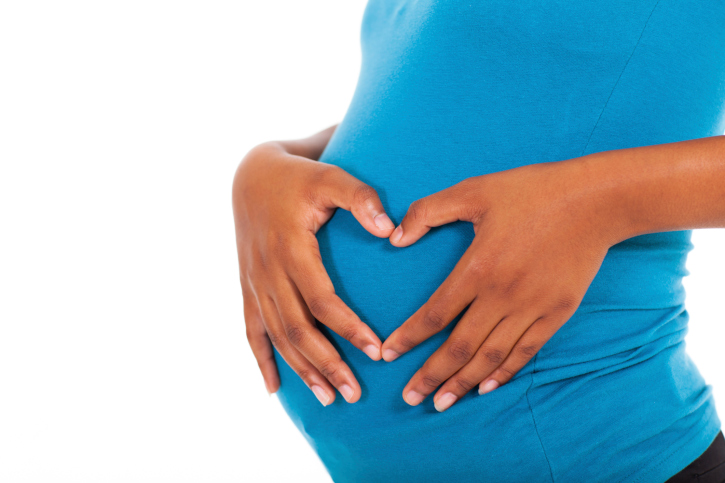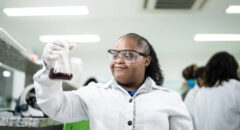
With March being Trisomy Awareness Month I can’t think of a better time than now to talk about trisomy, what it is, how it is diagnosed and what its potential implications are for expectant parents.
So what is trisomy? Well, to answer that questions we have to take a quick trip back to high school genetics. All humans have 46 chromosomes arranged in 23 pairs. We get 23 chromosomes from mom and 23 from dad. The word trisomy refers to a condition in which there is a third copy (tri-) of a specific chromosome (-somy). There are many different trisomies and the particular syndrome that results depends upon which particular chromosome the affected individual has three copies of. The most commonly known trisomy is trisomy 21 (three copies of the 21st chromosome), much more commonly known as Down Syndrome.
READ: Blood Test May Help Rule Out Pregnancy Complications
So why are we talking about trisomy? 1 in 100 (1% of) pregnancies will be affected by a trisomy, so the condition is not nearly as uncommon as people might think. Many trisomies result in early pregnancy loss (miscarriage) but a significant minority do result in live births.
Can trisomy be prevented? In most cases, the short answer is no. Trisomy is a condition that occurs before conception (either the sperm or the egg has an extra chromosome) and there are no current therapies that can reverse or treat the condition once fertilization has occurred. The great majority of pregnancies affected by a trisomy will result in early (usually first trimester) miscarriage but many affected pregnancies do continue to term resulting in a live birth. The only way to prevent trisomy is IVF (in vitro fertilization), but even this does not "prevent" trisomy. Instead, it allows for only genetically healthy fetuses to be implanted due to pre-implantation genetic testing.
Can trisomy be diagnosed during pregnancy?: Yes, there are a variety of tests and procedures that can be used to diagnose trisomy beginning early in a pregnancy. These tests include:
- Cell free DNA testing: This is a relatively new and exciting technology because unlike other more invasive testing, cell free DNA testing only requires a maternal blood sample. Testing can be performed as early as the 10th week of pregnancy and it has the added benefit of being able to tell expectant parents the gender of their baby long before it could be determined by ultrasound. One drawback to cell free DNA testing is that it does not test for all trisomies, however, it does test for trisomy 13, 18 and 21 (and X and Y chromosome abnormalities), which are among the most common trisomies in live births.
- First and second trimester screening: These screenings are also performed using maternal blood samples and they are performed between 10-12 weeks gestation (for the first trimester screen) and 15-18 weeks (for the second trimester screen). Both tests do have higher false positive’s (having an abnormal test result despite a normal fetus) than does Cell Free DNA testing but these tests are much less expensive and generally better covered by insurance companies. These tests can also detect neural tube defects (i.e. spina bifida) which cell free DNA technology cannot. First trimester screening is usually combined with a special ultrasound to evaluate the fetal neck and nasal bone (both of which can be abnormal in certain trisomy’s) and a full anatomical ultrasound is usually performed soon after the second trimester screen.
- CVS (Chorionic Villus Sampling): This is an invasive technique that uses a needle placed through the abdomen or vagina to extract placental tissue that carries fetal DNA. CVS has the benefit of being very accurate but of all the testing techniques it has the highest complication rate with up to 2% of pregnancies being lost after testing. CVS testing can be done at 10 weeks of pregnancy, which is earlier than amniocentesis.
- Amniocentesis: This is another invasive procedure that uses a needle to draw amniotic fluid through the mother’s abdomen. Because the fetus is “swimming” in the amniotic fluid, his or her cells slough off and can be extracted from the fluid. While invasive, amniocentesis is less risky than CVS, however, it can only be performed later in the pregnancy (as early as 15 weeks but more commonly at or after 18 weeks).
Can babies with trisomy survive? There are trisomies with which babies can survive, including the most well known, trisomy 21 (Down Syndrome). The likelihood of survival and the extent of associated abnormalities are determined by the particular trisomy in question. The most common trisomies are:
- Trisomy 21 (Downs Syndrome): This is the most common trisomy seen in live births (trisomy 16 is the most common trisomy but it invariably ends in miscarriage) with about 0.1% of all pregnancies resulting in a baby with Down Syndrome. The older the mom at the time of conception, the higher the risk of having a baby with Down Syndrome. Most babies born with trisomy 21 do survive, though they have varying degrees of intellectual and physical growth delay along with characteristic physical and anatomical anomalies. Most babies born with Down Syndrome with proper medical care can live well into their 50’s and even 60’s!
- Trisomy 18 (Edward’s Syndrome): This is the second most common trisomy seen in live births. Most babies born with trisomy 18 have physical defects involving almost every organ system resulting, unfortunately, in a very low survival rate beyond the first year of life.
- Trisomy 13 (Patau’s Syndrome): This is the third most common trisomy seen in live births and much like trisomy 18, these infants have a host of physical anomalies and malformations that almost always result in death before the end of the first year of life.
- Sex chromosome trisomies: These 0ccur when a baby has a third copy of either an X or Y chromosome. Normal females have two X chromosomes (XX) and normal males have an X and a Y chromosome (XY). In certain cases, infants can have an extra sex chromosome resulting in XXY (Klinefelter’s syndrome), XXX (triple-X syndrome) and XYY syndrome. People born with Klinefelter’s syndrome have a host of more subtle abnormalities including sterility, muscle weakness, tall stature, less body hair, smaller genitals and breast growth. Klinefelter’s is frequently not diagnosed until after the onset of puberty. Women with triple X syndrome appear and generally function normally and often times the diagnosis is never made. Men with XYY syndrome also have very subtle characteristics (tall stature, increased acne and a mild reduction in intelligence) that frequently goes unnoticed.
Why is trisomy awareness important? This gets to the heart of a discussion that every expectant couple has to have and one that I encourage all of my expectant parents to have very early on in the pregnancy. While there is nothing that can be done to prevent or treat the various trisomies, the information that testing provides can be invaluable.
Personally, my wife and I did some form of testing with all five of our pregnancies not because the results would change the outcome but because knowledge facilitates preparation. Being aware not only allows parents to be mentally and physically prepared but it also allows for physical preparation on the part of the healthcare team. Many babies born with a trisomy will have physical or anatomical defects that would be better cared for in a tertiary care center (a medical center with the highest level of care).
Beyond birth, there are a host of social and community resources available to parents and families of those affected. There really is no substitution for knowledge and preparation.
 Idries J. Abdur-Rahman, MD, FACOG is a board certified Obstetrician/Gynecologist. He practices alongside his twin brother Dr. Jamil (who is also a board certified Obstetrician/Gynecologist) in the Northwest Suburbs of Chicago. Dr. Idries is a married father of two son’s and three daughters and he is an avid traveler and runner. Learn more at TwinDoctorsTV.com.
Idries J. Abdur-Rahman, MD, FACOG is a board certified Obstetrician/Gynecologist. He practices alongside his twin brother Dr. Jamil (who is also a board certified Obstetrician/Gynecologist) in the Northwest Suburbs of Chicago. Dr. Idries is a married father of two son’s and three daughters and he is an avid traveler and runner. Learn more at TwinDoctorsTV.com.









